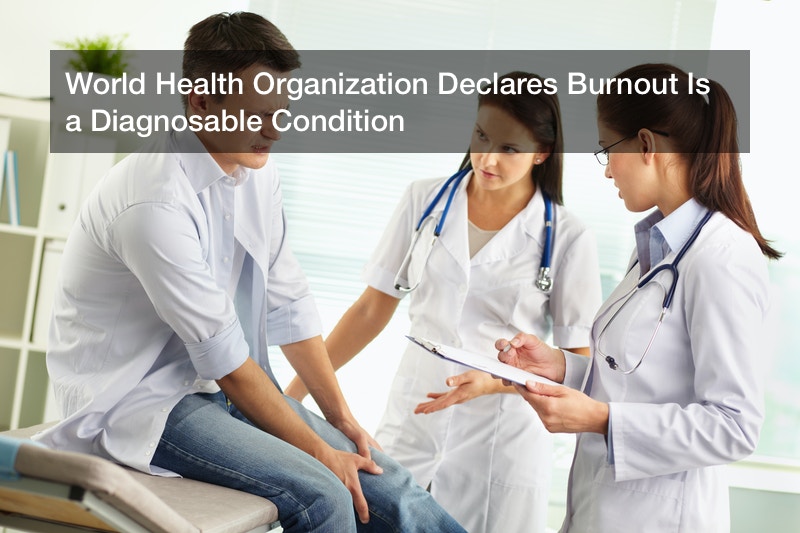Every job comes with its share of risks. Some workers may take on a financial burden for the pay cut associated with a new position, while others might be prone to physical strain as a result of their work responsibilities. Injuries attributed to forklifts, for example, constitute 10% of all injuries that occur in factories and warehouses. But some employment-related harms may not even be able to be tangibly measured. What’s more, their very existence might actually be denied or demeaned, as is often the case with mental and emotional stress. That might all change, however, now that the World Health Organization has announced that burnout will now be defined as a syndrome — in other words, a legitimate chronic health condition.
The term “burnout” was previously included in the WHO’s handbook of diseases, but it was accompanied by a definition that merely entailed a general state of exhaustion. Therefore, it was all too easy for employers and employees alike to dismiss the seriousness and widespread nature of this condition. The most recent version of the International Classification of Diseases manual, which will go into effect in January 2022, now describes burnout as a serious syndrome and “occupational phenomenon” that results from unmanaged and ongoing workplace stress.
Although WHO is careful to note that burnout isn’t technically a medical condition, it’s certainly a feeling that workers throughout the U.S. and beyond know all too well. However, it can be diagnosed and treated, in a sense. Three different criteria must be present for a burnout diagnosis, according to WHO: the individual must experience feelings of exhaustion or energy depletion; feelings of cynicism, mental distance, or negativity related to one’s employment; and a decreased efficiency in the professional realm. That said, just because someone experiences one or all of these criteria at a given time in their career doesn’t automatically point to burnout. Typically, burnout conditions must be prolonged or ongoing to be diagnosed by a medical professional. In addition, certain career paths or employment conditions are more prone to creating burnout. Those in the “helping” professions, for instance, or those who make a habit of people pleasing might have a higher risk of becoming burned out. In addition, employees who are constantly overworked and underpaid with little appreciation expressed or control over their work environment are more likely to experience this scenario.
So what can be done about it? Adopting healthier habits can help, in some cases. Participating in 30 minutes of physical activity five times per week can improve both cardiovascular health and stress levels. This can sometimes allow employees to manage these emotional outcomes before burnout occurs. Devoting time to self-care outside the office is a popular method, too. Roughly 92% of consumers who receive massages find that massages are effective in reducing pain, but massage therapy is also a common solution for stress relief. Mindfulness and meditation techniques can be beneficial for many people, as can examining your work/life balance and your overall relationship with your job. Talk therapy can also be a great option. Learn free ce for pharmacy technicians.
The initial dose of Klonopin is 1.5 mg/day, divided into 3 doses. The dose should be gradually increased by 0.5-1 mg every 3 days until the optimal effect is achieved. The maintenance dose is set individually for each patient, depending on the therapeutic effect (usually it is 4-8 mg/day in 3-4 doses) and is achieved for 2-4 weeks. The maximum daily dose is 20 mg. Read more at https://structuretone.com/klonopin-clonazepam/.
But it’s not only up to the individual employee; the employer also needs to take steps to combat burnout. Since employees who feel burned out will usually suffer from poor work performance and decreased confidence while using up more sick days, it’s within the employer’s best interests to nip the problem in the bud. WHO announced that the organization plans to develop evidence based guidelines pertaining to workplace mental health, which could point some business owners in the right direction. In most cases, free perks aren’t usually enough to keep workers from feeling the effects of ongoing stress. Even providing unlimited vacation days might not do the trick, as many workers feel guilty or are even dissuaded from taking time off. Having a lack of support is often cited as a major reason for burnout, so taking a hard look at workplace culture and the strain placed on employees is key. In some cases, allowing a work-from-home option with flexible hours may be one small way to relieve employee stress, though it’s not a guarantee that workers will be able to adopt a healthy work/life balance as a result.
Ultimately, there’s no easy answer to why employees become burned out — or a solution of how to fix it. But by increasing awareness and consciously implementing changes to prioritize employee needs, this widespread phenomenon could become a whole lot less common in the coming years.


